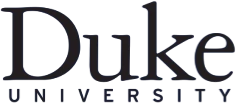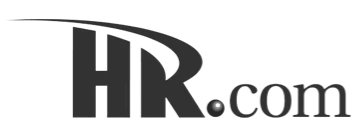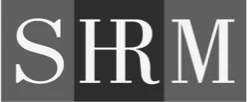Templates & GuidesRecruitment Strategy & Planning
A Data-Driven Recruitment Plan Template to Outpace the Talent Market
TABLE OF CONTENTS
Download Template
Recruitment planning is a crucial aspect of any organization’s hiring process. A well-structured recruitment plan helps leadership, and the HR team streamline their recruitment efforts. Effective recruitment planning involves an analysis of the organization’s hiring needs, including workforce gaps, future workforce requirements, and input from department heads. With a data-driven hiring plan in place, leaders can set realistic timelines even when resource constraints tighten budgets. Regular reviews that track emerging industry trends ensure the document evolves rather than expires.
By developing a comprehensive recruitment plan, organizations can improve their candidate journey, reduce recruitment expenses, and increase the quality of their hires. A recruitment plan should include a comprehensive recruitment budget, a detailed job title list, and an interview process to ensure the hiring process is effective. Recruitment agencies and job boards can also play a vital role in the employment process, providing access to a pool of qualified candidates.
Leveraging technology, such as applicant tracking systems (ATS), allows organizations to automate and streamline their recruitment process, making it more efficient. Ultimately, recruitment strategy is essential for achieving business goals and staying competitive. Documenting this strategy in a single hiring plan gives HR team members a shared dashboard, clarifies spend, and speeds decisions when it is time to hire people quickly.
Why Every Organization Needs a Recruitment Plan Template
A written recruitment plan gives leaders, finance, and stakeholders a shared playbook for the hiring process. The Society for Human Resource Management’s 2024 reports that filling a single job opening in the United States now takes an average of forty-two days to fill, and the total cost can rise to forty percent of a typical first-year salary.
When every task, owner, and date is present in one file, teams save time and protect the recruitment budget. A recruitment plan provides more control over the hiring process, ensuring that each phase is executed. A central document also keeps projects moving because managers no longer scramble to hire at the last minute.
A 2025 shows that 77% of companies cannot find the skills they need. A repeatable recruitment plan template gives firms enough structure to stay competitive in this tight market while still letting them adjust to surprise vacancies or new growth targets. Most importantly, the living hiring plan highlights where fresh new hires will add value and where upskilling current staff fits long-term succession planning.
Groundwork: Define Hiring Needs and Goals
Assess the Current Workforce
Building a plan starts with a clear picture of the current staff. HR dashboards or even spreadsheets can flag shortages in technical know-how, leadership depth, or regional coverage. A short meeting with each department head reveals which roles keep daily operations running and which skills may vanish as projects shift, or staff retire.
The template also lists the required skills and technical skills for each vacancy, so recruiters target the right candidates from day one.
Project Future Hiring & Upcoming Projects
Aligning key milestones in the hiring timeline with future requirements helps track progress and ensures that recruitment efforts stay on schedule. Written goals highlight real hiring needs and show whether you can move current employees into stretch roles or must seek additional staffing from outside.
A quick formula: Current Headcount + Expected Resignations – Confirmed Promotions = Future Hiring Numbers.
These numbers roll directly into the hiring plan, where annual hiring goals anchor forecasts for salary costs, onboarding dates, and team capacity.
Building a Strong Employer Brand
A strong brand is critical for attracting and retaining top recruits, as it showcases the company’s values, culture, and mission. Branding efforts should be tailored to the organization’s specific needs and goals, highlighting its unique strengths and benefits. A well-crafted brand can help reduce employee turnover, improve candidate exposure, and increase the quality of hires.
HR teams should work to develop a unique employer brand, ensuring it is communicated across all social media and job postings. A unique brand can also help organizations differentiate themselves from competitors, making them more attractive to potential candidates. By highlighting company culture organizations can create an employer brand that resonates with top talent.
Organizations should ensure that their employer brand is aligned with their overall marketing strategy. By building a robust employer brand, organizations can establish themselves as a first choice for top talent, attracting the best candidates which further drives business success.
Budget and Resources: Controlling Recruitment Expenses
Build a Clear Budget
Money is the first constraint most leaders face during the onboarding process. Generally hiring costs can be broken down into the following categories:
Roughly one-quarter usually goes to job posting fees on sites such as LinkedIn or Indeed. Another fifth pays for agency fees when recruitment agencies fill complex (skill-driven) roles. Background checks and assessment tools often take around ten percent, and technology, like an ATS or video interview software, absorbs another fifteen percent. The remaining share covers career-fair stands, branded gear that supports a strong employer brand, relocation, or signing bonuses.
Maintaining a rolling recruitment budget inside the master hiring plan helps leaders match spend to forecast output and justify adjustments during lean cycles.
Allocate Resources Under Limited Budgets
A social media campaign that gains attention but few applications can lose funding. Leaders should weigh agency fees against the value of internal time saved; if in-house sourcing outperforms external partners, funds can move accordingly. This constant review pushes teams to allocate resources toward channels that work and freeze those that fail.
Craft Job Descriptions & Job Posting Strategy
Write Winning Job Descriptions
Posts with a short job title and visible pay range draw thirty-eight percent more applications. Effective ads open with the title and team name, outline the mission in five concise lines and spell out both must-have and nice-to-have abilities. Including the salary band and calling out two core points that mirror the corporate values strengthens the employer brand and builds trust with applicants.
Choose the Right Job Boards & Social Media
Volume roles thrive on broad job boards, while niche sites such as GitHub Jobs or Behance reach scarce technical artists or engineers. The 2024 Recruiter Nation Report shows that sixty percent of quality hires come from referrals or targeted boards rather than catch-all channels.
Complement boards with social media platforms where short videos or project spotlights reveal a living, breathing workplace. Refresh each job posting every two weeks so algorithms keep it visible, and test two headline variations to see which brings the most qualified clicks.
Source Candidates: Channels That Deliver
Employee Referrals
New recruits reach full productivity a quarter faster when they join via trusted pathways. A simple bonus paid in two phases, one at the start date and one after six months, encourages staff to share openings while linking reward to retention.
Recruitment Agencies
When deadlines loom or internal bandwidth drops, trusted recruitment agencies can pull from existing talent pools. Weekly pipeline reports keep everyone aligned, and a fixed cap on agency fees prevents budget shocks.
ATS Integration
Modern ATS store résumés, schedule interviews, and produce live dashboards for time-to-hire or source quality. These insights reveal which channels feed steady streams of qualified candidates and which channels lag, letting recruiters adjust the funnel without delay. The same dashboards update the master hiring plan, ensuring staffing projections reflect reality before leaders commit to new hires.
The Interview Process
Interview Scheduling & Stages
Smooth scheduling reduces candidate drop-outs. Internal Google research shows that applicants are eighty percent more likely to accept an offer when no interview stage slips by more than five days. A simple path, phone screen, skills task, panel interview, reference check, and final offer, sets logical expectations for everyone and keeps the average time from post to offer within target.
Expectations for Managers & Other Stakeholders
Structured interviews remain twice as predictive as free-form chats, according to studies published in Personnel Psychology. Scorecards tied to core abilities, cultural fit, and long-term potential guide panels and produce fairer hiring decisions. When recruiters share the same rating sheets, the applicant lifecycle feels consistent, and selection discussions move faster.
Improving the Recruitment Journey
Experience is a critical aspect of recruitment, as it can attract and retain top talent. Organizations should strive to create a positive and engaging candidate journey, from the initial job posting to the final interview stage. This can be achieved by providing clear expectations, timely communication, and a streamlined interview process.
By leveraging technology, such as automated email responses and interview scheduling tools, organizations can improve the effectiveness of their experience. Additionally, organizations should solicit feedback from candidates, using it to identify areas for improvement and optimize their recruitment process. Capturing feedback also feeds directly into the onboarding process, letting teams tailor day-one activities so new employees feel welcome and productive.
A positive applicant experience can also lead to increased employee referrals, reduced turnover, and improved overall business performance. By prioritizing candidate experience, organizations can establish themselves as employers of choice, attracting top talent and driving business success.
Leveraging Technology in Recruitment
Technology plays a significant role in modern recruitment, enabling organizations to streamline their hiring process, improve efficiency, and reduce costs. Applicant tracking systems, social media platforms, and job boards are just a few examples of the many tools available to recruiters and hiring managers. By leveraging these technologies, organizations can automate tasks, such as resume screening and interview scheduling, freeing up time for more strategic activities.
Additionally, technology can help organizations improve their candidate experience, providing personalized communication and timely updates throughout the recruitment process. HR professionals and hiring managers should stay up-to-date with the latest recruitment technologies, ensuring that their organization is using the most effective tools to attract and retain top talent.
By embracing technology, organizations can gain a competitive edge in the recruitment market, improving their ability to find and hire the best candidates.
Putting the Recruitment Plan Template to Work
Getting value from the recruitment plan template takes only a few actions:
- First, download the file, store a master copy on a shared drive.
- Next, send the file to HR professionals, finance partners, and line leaders so everyone edits one document rather than several versions.
- Whenever new positions appear or the talent market changes, update the living sheet in real time.
- A short review after each hire captures lessons that sharpen the next search.
Over time, this single file becomes the heartbeat of the company’s hiring strategy and keeps every team focused on the right talent at the right moment.
Turning Your Recruitment Plan Template into Daily Action
By combining clear goals, disciplined budgeting, smart sourcing, and ongoing measurement, any company can turn a simple recruitment plan template into a lasting competitive edge. With data on hand and responsibilities spelled out, leaders reduce guesswork, project costs, and welcome the people who will fuel their next phase of growth.
A well-implemented recruitment plan template can be a game changer for mid-sized businesses, optimizing resources and improving hiring outcomes. When teams follow the same hiring plan, managers can track progress, nurture new hires, and ensure that all new employees receive the coaching they need to succeed.






















